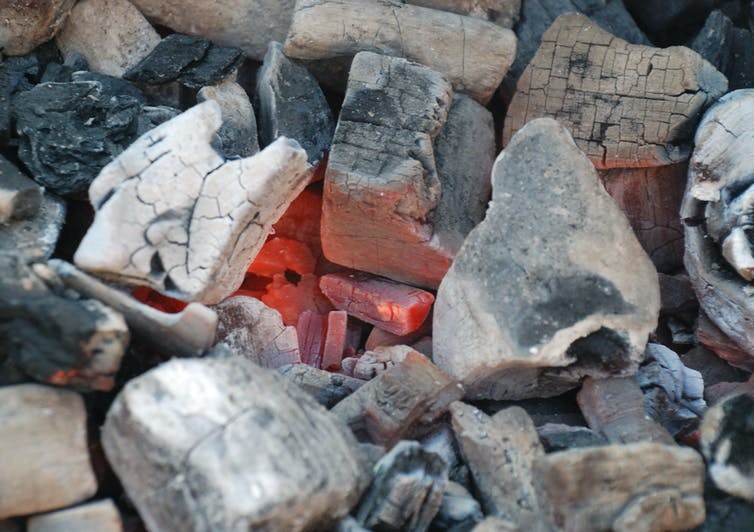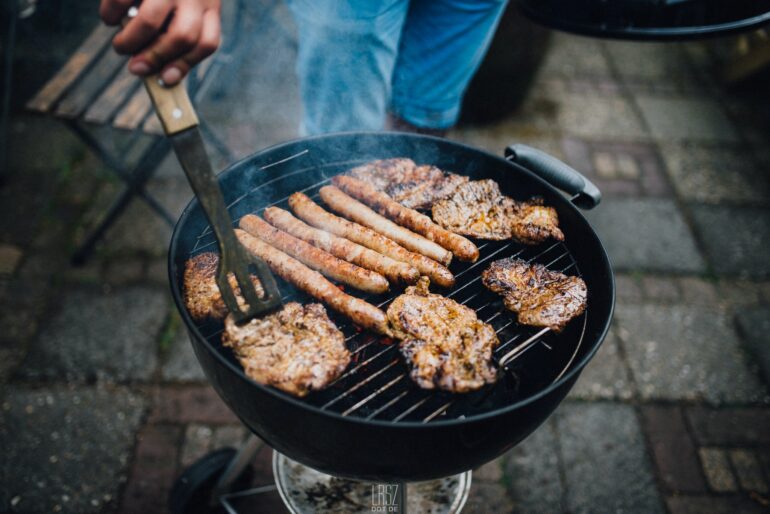The mere thought of barbecue’s smokey scents and intoxicating flavors is enough to get most mouths watering. Summer is here, and that means it is barbecue season for many people in the U.S.
I am a chemist who studies compounds found in nature, and I am also a lover of food – including barbecue. Cooking on a grill may seem simple, but there is a lot of chemistry that sets barbecue apart from other cooking methods and results in such a delicious experience.

Cooking over an open flame – whether from gas, wood or charcoal – allows you to use both radiant and conductive heat to cook food.
Romary/Wikimedia Commons, CC BY-SA
Cooking with fire
First, it is important to define barbecue because the term can mean different things in different cultures or geographic locations. At its most basic, barbecue is the cooking of food over an open flame. What sets barbecue apart from other cooking methods is how heat reaches the food.
On a barbecue, the hot grill grates heat the food via direct contact through a process known as conduction. The food also warms and cooks by absorbing radiation directly from the flames below. The mix of heating methods allows you to sear the parts of the food touching the grill while simultaneously cooking the parts that aren’t touching the griddle – like the sides and top – through radiating heat. The resulting range of temperatures creates a complex mixture of flavors and aromas. When cooking on a stovetop, there is much less radiation and most of the cooking is done where the food is in direct contact with the pan.
When barbecuing, you can either put the food directly above the flames – what is called direct heat – or farther away on indirect heat. The direct cooking method subjects the food to very high temperatures, as the grilling surface can be anywhere from 500 to 700 degrees Fahrenheit (260 to 371 Celsius). The indirect cooking method places the heat source to the side of the food or far below, exposing the food to temperatures around 200 to 300 F (93 to 149 C).
Cooking is the process of using high temperatures to drive chemical reactions that change food at a molecular level. When you cook meat at higher temperatures – like over direct heat on a barbecue – the first thing to happen is that water near the meat’s surface boils off. Once the surface is dry, the heat causes the proteins and sugars on the outside of the meat to undergo a reaction called the Maillard Reaction. This reaction produces a complex mixture of molecules that make food taste more savory or “meaty” and adds depth to scents and flavors. The reaction and the flavors it produces are influenced by many variables, including temperature and acidity as well as the ingredients within any sauces, rubs or marinades.
A similar process occurs with vegetables. Barbecuing allows the water to evaporate or drip down without getting trapped by a pan. This keeps the vegetables from becoming…
